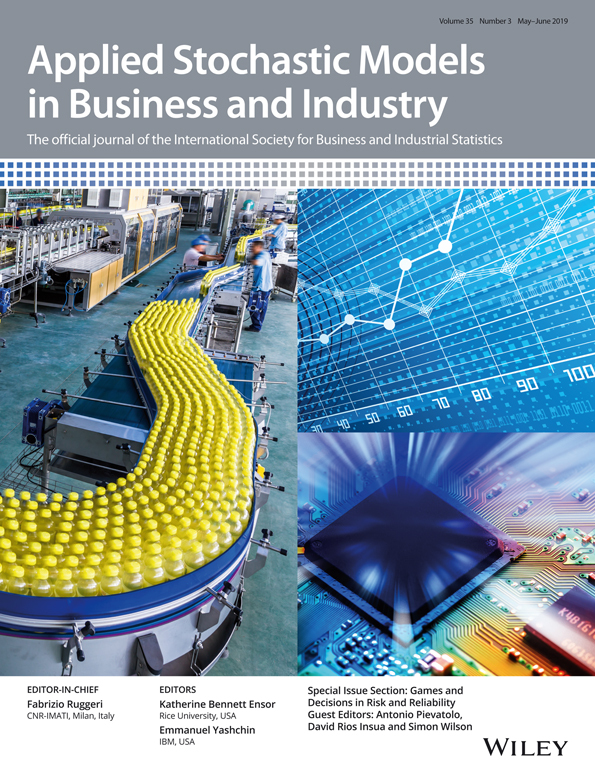Special issue of ASMBI for GDDR 2017
The symposia on Games and Decisions in Reliability and Risk (GDRR) have been running since 2009, when the first meeting was held at George Washington University in Washington, DC. They have been held every 2 years since then, with the 6th symposium of the series making a return to its first venue at the end of May 2019. The focus of the meetings is to present research on the application of game and decision theory methods to reliability and risk analysis across diverse disciplines such as economics, engineering, finance, medical sciences, and transportation.
This special issue of Applied Stochastic Models in Business and Industry has arisen out of the 5th workshop that was held in 2017 in Madrid, Spain. The 2-day meeting held application-focussed sessions on cybersecurity, environmental risks, fraud, and health risk, and more methodologically focussed sessions on decision theory, graphical models, and reliability theory.
There are 5 papers in this special issue that cover several of the topics covered at the meeting. Balbás and Charron look at the important idea of the value at risk, a risk measure that is seeing increasing use in financial regulation. They present some theory on its properties in “ambiguous” settings, where lack of data or measurement errors mean that one is deriving value at risk with imperfect knowledge. Gallego et al look at an application of decision theory to allocate expenditure on advertising so as to maximize sales. This makes use of structural time series models, fitted via a Bayesian learning approach and has a general risk-based application to investment allocation.
Two papers focus on risk management issues in cybersecurity. Miaoui et al adopt a strategic approach describing a model that supports the investment decisions of an organization in security controls, cyberinsurance, and forensic tools. Naveiro et al adopt an operational approach, looking at questions of network safety and monitoring, and how to make forecasts of potential issues in a network at large scale, using variants of dynamic linear models. They describe a framework for time series forecasting across a large number of nodes in a network that is entirely automatic.
Finally, Najem and Coolen examine the effect of swapping components of the same type, upon failure of one of them, on the survival signature of a system, as a means of improving its resilience. They also analyze component importance. This strategy is an alternative to other approaches such as increasing redundancy, component reliability, or maintenance activities.
We would like to thank the special issue authors for their interesting work and look forward to continuing the GDRR symposium series tradition into the future.




